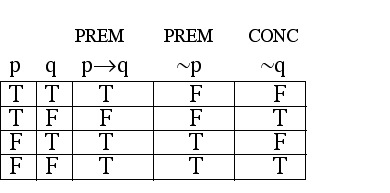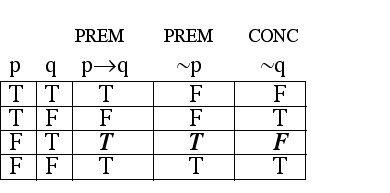EXAMPLE 2.3.1 Solution
Step 1: Symbolize the argument.
Let p be the statement "The apartment is damaged."
Let q be the statement "The deposit won't be refunded."
Then the argument has this form:

Note: the triangular configuration of dots represents the word "therefore."
Step 2: Make a truth table having a column for each premise and for the conclusion.

Step 3: Look for the indication of an INVALID argument
(a row where every premise is true while the conclusion is false).

Notice that in the third row, both premises are true while the conclusion is false;
this "bad row" tells us that the argument is INVALID.